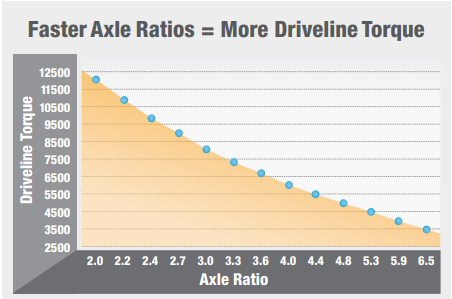RoyJ wrote:
ShinerBock wrote:

They say a picture is worth a 1000 words! That's EXACTLY my point earlier:
RoyJ wrote:
That means the ONLY difference in stress between a 3.31 and 4.30 truck is the transmission output torque, or driveshaft torque (again, T-in must = T-out). Because on the same hill, a 4.30 truck may be in 6th and the 3.31 truck in 5th.
Your only stress increase with taller gearing is driveshaft torque.
If anything else is burning up - that's drive abuse. Which granted, happens often with today's fleet drivers. But we're talking RV owners here.
This is referencing drivelines connected to manual transmissions. Eaton and Meritor, class 8 transmission and clutch manufacturers, also did research on the effect of downspeeding on their clutches and manual transmissions, but I cannot find the pdf on that right now.
They had to beef up their products to handle the effects of downspeeding. If I remember correctly, the clutch material had to be changed to handle added stress and a different diaphrag is used to mitigate the vibrations that downspeeding caused. Eaton came out with their Endurant line of transmissions which is more robust to handle the added stress.
In an automatic, you have clutches linking one side that is from the engine(input) and the other linked to the driveline(output) that this stress is being placed upon them. So any added stress is reverberated on the output side into these clutches.
It is partly driver error because you have many people who just let the computer do all the work versus people like the OP you knows that the computer doesn't always know the best gear for what he is pulling and changes gears accordingly to lessen this stress.
Is this driver error? There are arguments for both sides, but I, like the OP, choose to change the gears myself based on what I am pulling. However, there are many out there that don't and just let computer do all the work. These are the people will generally have transmission clutch issues later on.



